Table of Contents
Weld Basics
What Is a Weld?
A weld is used to join parts together by melting the materials and causing fusion.

In the GIF above a MIG welder is being used to weld the two metal components together.
A MIG welder has filler material which deposits material between the two parts. This leaves behind a bead of weld that looks like this:
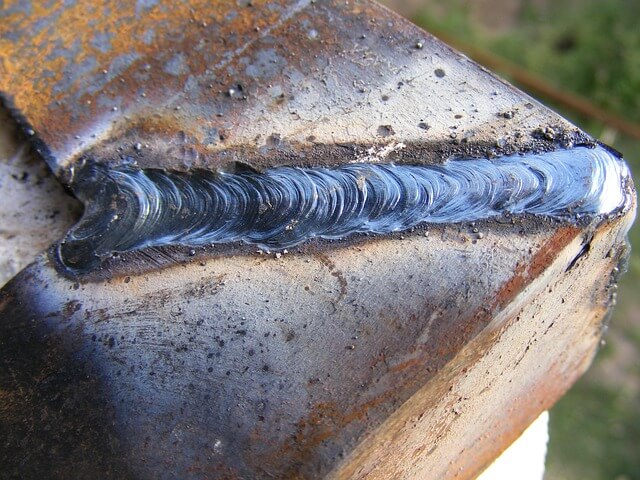
We can see welds like this everywhere we look.
Usually they are cleaned up for society and seeing the welds may not be as obvious as the weld above.
One way to make welds look better is to use a process called shot blasting.
Shot blasting welded steel structures results in a dulled surface finish as seen on this handrail:
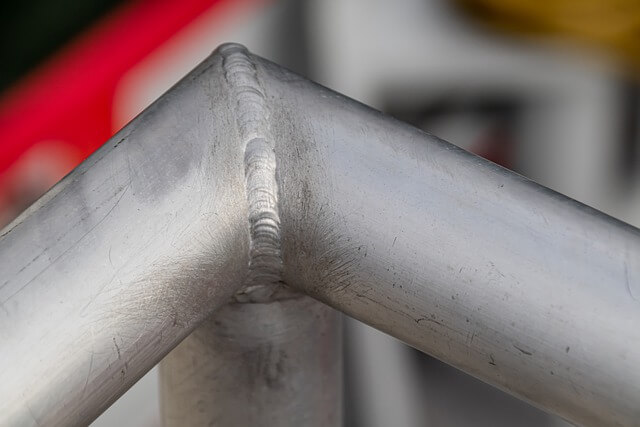
Another way to neaten up a weld is to simply paint the component after it is welded:
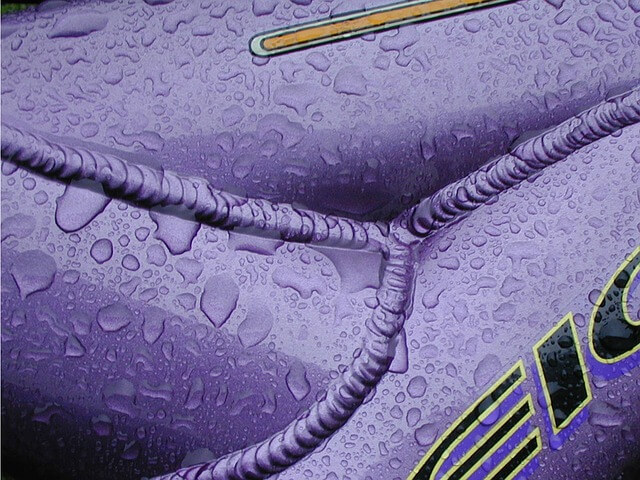
To explain the different types of welds available to us, it will be useful to first show how different parts can be welded together.
The way different parts can be welded together is known as a joint.
Different Types of Weld Joints
There are 5 basic joints used in welding:
- Groove (or Butt) Joint
- Corner Joint
- Edge Joint
- Lap Joint
- Tee Joint
Let’s explain each one.
Rotate and zoom the 3D models like in this animation:
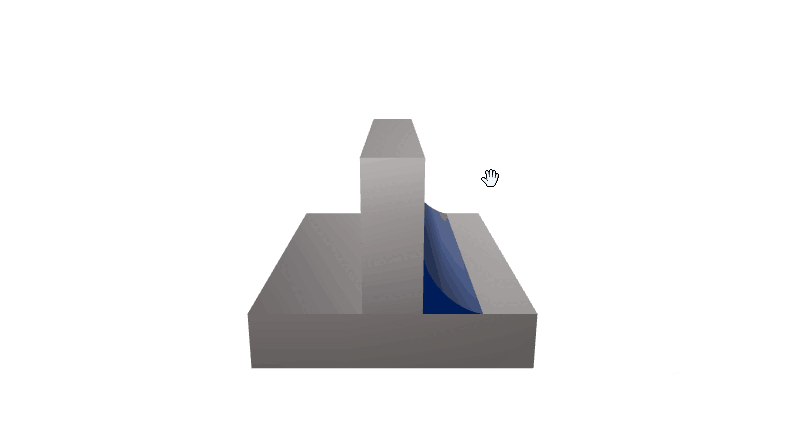
What Is a Groove (Butt) Joint?
A groove (or butt) joint is where two parts are joined together via a gap or a groove.
For example, if we have two metal plates with a gap between them:
We can add a weld in between the gap (represented in blue):
This is known as a groove (or butt) joint.
If instead we now have two metal plates pushed together (or “butt-up” to each other):
This time we don’t have a gap between the two plates for the weld filler.
To place a weld between the plates we can cut a groove into the plates to give space for the weld filler:
And now we are able to apply our weld:
This is another example of a groove joint.
What Is a Corner Joint?
A corner joint is where two parts are joined at a corner.
Think of two plates meeting at a corner:
The weld can be placed between the corner to join both plates:
What Is an Edge Joint?
An edge joint is where two parts are joined at a common edge and are parallel to each other.
A simple example is having two plates together like this:
The plates can be joined by placing the weld at the edge:
What Is a Lap Joint?
A lap joint is where two parts overlap one another:
The weld can be applied where the two plates over-‘lap’:
What Is a Tee Joint?
A tee joint is where two parts together form a ‘T’ shape, such as this:
The weld can be applied where the plates meet perpendicularly:
Naming Different Types of Welds
The name given to a type of weld is usually determined by the shape of its cross section.
For example, a square groove weld has a square cross section, a spot weld is the shape of a spot, and the cross section of a slot weld is the shape of a slot.
Cross Section Contours
The shape of some types of welds can also be flush, convex or concave.
These are known as cross section contours.
What Is a Flush or Flat Cross Section Contour?
For example a weld with a flush (or flat) contour looks like this:
What Is the Symbol for a Flush or Flat Cross Section Contour?
The symbol for a flush contour is a vertical straight line:
![]()
What Is a Convex Cross Section Contour?
For example a weld with a convex contour looks like this:
What Is the Symbol for a Convex Cross Section Contour?
The symbol for a convex contour type of weld is a curved line:

What Is a Concave Cross Section Contour?
A weld with a concave contour looks like this:
What Is the Symbol for a Concave Cross Section Contour?
The symbol for a concave contour is a curved line, in the opposite direction to the convex contour:

If we are not concerned about having a certain cross section contour weld, we can also omit this and have no contour.
Groove (Butt) Welds
What Are Groove Welds?
A groove (or butt) weld is a type of weld where parts are joined via a weld between a groove or gap (think of the groove joint discussed at the start).
There are 6 main groove welds:
- Square Groove
- Bevel Groove
- V Groove
- J Groove
- U Groove
- Flare Groove
The difference between each is the cross section shape.
Let’s look at each one.
Square Groove Welds
What Is a Square Groove Weld?
A square groove weld is where the weld cross section shape is a square or rectangle.
The square can be cut out of the material or the gap can be created by simply moving the two components apart from each other.
The prepared metal plates could look something like this:
The square groove weld would then look like this:
What Is the Square Groove Weld Symbol?
The symbol for a square groove type of weld is two vertical lines:
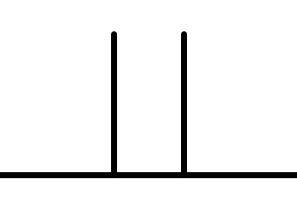
What Is a Square Groove Weld Used For?
A square groove weld is used as it is a simple and cheap weld joint to produce.
Square groove welds are usually used for sheet metal (material less than 5 mm in thickness).
Using larger thickness material can make it difficult to apply the weld and further preparation may be required to make a stronger weld.
Bevel Groove Welds
What Is a Bevel Groove Weld?
A bevel groove weld is where one of the components has a bevel (or chamfer) cut on the connecting edge.
Preparation for a bevel groove weld looks like this:
And then after welding it would look like this:
What Is the Symbol for a Bevel Groove Weld?
The symbol for a bevel groove weld is the following:
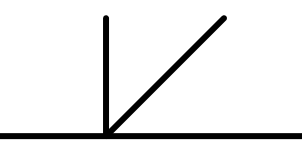
What Is a Bevel Groove Weld Used For?
A bevel groove weld is typically used for thicker materials to make it easier to apply the weld.
It is also usually used when only one of the connecting components can be modified.
What Is a Bevel Groove with Broad Root Face Weld?
A bevel groove with a broad root face is a type of weld where the bevel doesn’t cut through all of the face:
Then with the weld:
What Is the Bevel Groove with Broad Root Face Weld Symbol?
The symbol for a bevel groove with a broad root face weld is:

What Is a Double Bevel Groove Weld?
A double bevel groove is when the bevel is applied to the other side of the same component:
And then after welding it would look like this:
What Is the Symbol for a Double Bevel Groove Weld?
The symbol for a double bevel groove weld is:
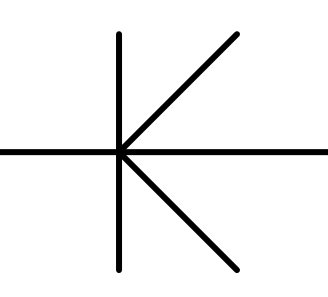
What Is a Double Bevel Groove Weld Used For?
A double bevel groove weld is typically for thicker materials because less weld filler is required – having two bevels are narrower than a single bevel due to the same material thickness.
The added benefit of using a double bevel is that the other weld helps to cancel out distortion of material in one direction.
What Is a Steep Flanked Bevel Groove Weld?
A steep flanked bevel groove weld is a bevel groove weld with a steeper angle:
After welding:
What Is the Symbol for a Steep Flanked Bevel Groove Weld?
The symbol for a steep flanked bevel groove weld is:
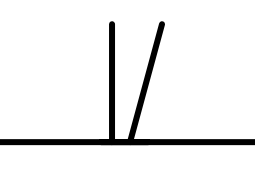
What Is a Steep Flanked Bevel Groove Weld Used For?
A steep flanked bevel groove weld requires less weld filler than a typical bevel groove weld.
V Groove Welds
What Is a V Groove Weld?
A V groove weld is where a bevel is placed on both connecting components:
The weld produced has the cross section of a V:
What Is the Symbol for a V Groove Weld?
The symbol for a V groove weld is shape of a V:
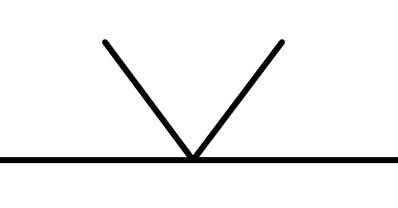
What Is a V Groove Weld Used For?
Similar to a bevel groove, a V groove weld is typically used for thicker materials to make it easier to apply the weld and to end up with a stronger weld.
A V groove is used when both components can be modified unlike a bevel groove weld.
What Is a V Groove with Broad Root Face Weld?
A V groove with a broad root face is where the V doesn’t cut through all of the face:
And then after welding it would look like this:
What Is the V Groove with Broad Root Face Weld Symbol?
The symbol for a V groove with a broad root face is:
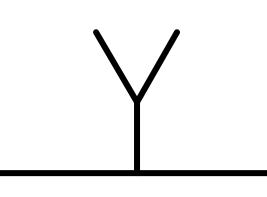
What Is a Double V Groove Weld?
A double V groove weld is where the bevel is on both components and on both sides of the components:
After welding it would look like this:
What Is the Symbol for a Double V Groove Weld?
The symbol for a double V groove weld is:
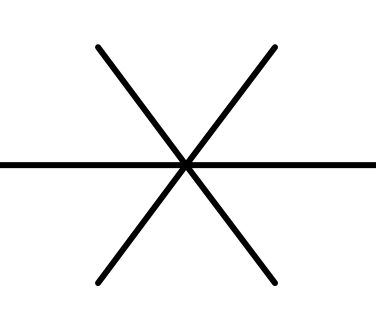
What Is a Double V Groove Weld Used For?
A double V groove weld is used when both sides of the material can be modified.
The benefit of using a double V weld is that less filler material is used as the double V profile is narrower than a single V.
Welding on both sides helps to minimise distortion and keep the material straight, similar to the double bevel groove weld.
What Is a Steep Flanked V Groove Weld?
A steep flanked V groove weld is like a V groove weld but with a steeper angle:
After welding it would look like this:
What Is the Symbol for a Steep Flanked V Groove Weld?
The symbol for a steep flanked V groove weld is:
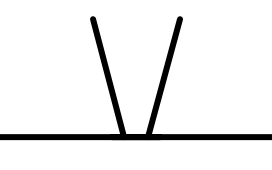
What Is a Steep Flanked V Groove Weld Used For?
Like the steep flanked bevel groove, a steep flanked V groove type of weld uses less weld filler than a usual V groove weld.
J Groove Welds
What Is a J Groove Weld?
A J groove weld is where a one component has a J shape cut into it. This usually requires specialist machinery to cut the J shape:
After welding it would look like this:
What Is the Symbol for a J Groove Weld?
The symbol for a J groove type of weld is:
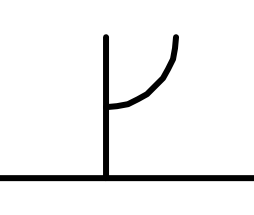
What Is a J Groove Weld Used For?
The J groove weld is typically not as easy or as cheap to produce compared to bevel grooves.
The benefit of J grooves is that the groove cuts into less material, so less weld filler is used.
What Is a Double J Groove Weld?
A double J groove weld is where the J groove is also on the other side of the component:
This forms a J shaped weld on both sides:
What Is the Symbol for a Double J Groove Weld?
The symbol for a Double J groove weld is:
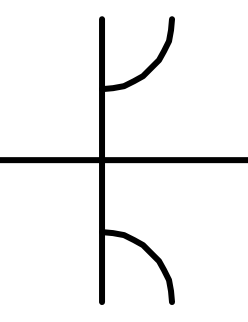
What Is a Double J Groove Weld Used For?
A double J groove weld is used when one component cannot be altered and a weld is on the other side on the component to help minimise distortion.
However, this J profile can be costly to produce.
U Groove Welds
What Is a U Groove Weld?
A U groove weld is like having a J groove on each component, forming a U shape when the components are together:
After welding it would look like this:
What Is the Symbol for a U Groove Weld?
The symbol for a U groove weld is:
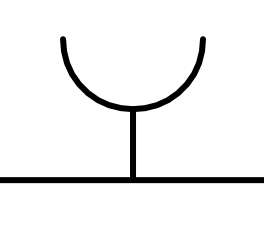
What Is a U Groove Weld Used For?
A U groove is used when both components can be modified to have a J shape cut into them. Again this uses specialist machinery so may be more expensive to produce.
U grooves are usually used to save the amount of weld used compared to a V weld – for example, on thick material components.
What Is a Double U Groove Weld?
A Double U groove weld is where the J shape groove is on both sides of each component, forming a U shape on the top and bottom:
After welding it would look like this:
What Is the Symbol for a Double U Groove Weld?
The symbol for a Double U groove weld is:

What Is a Double U Groove Weld Used For?
A double U groove weld can be used for thick components that require welding on each side and both of the components.
Flare Groove
A flare groove is where one or both connecting pieces is connected via a radius.
Sheet metal flanges and pipes and good examples of flare grooves.
What Is a Flare Bevel Groove Weld?
A flare bevel groove weld is where one component has a radius and the other has a flat face, such as below:
After welding it would look like this:
What Is the Symbol for a Flare Bevel Groove Weld?
The symbol for a flare bevel groove weld is:
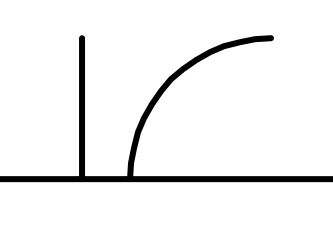
What Is a Flare Bevel Groove Weld Used For?
A flare bevel groove weld is often used in sheet metal for connecting flanges:
What Is a Flare V Groove Weld?
A flare bevel groove weld is where the radius is on both components:
After welding it would look like this:
What Is the Symbol for a Flare V Groove Weld?
The symbol for a flare V groove weld is:
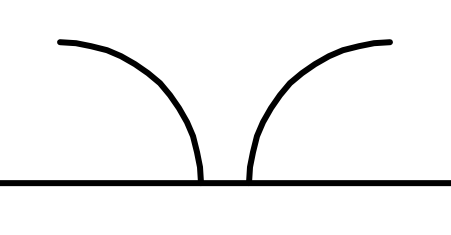
What Is a Flare V Groove Weld Used For?
A flare V groove weld is often used in sheet metal for connecting flanges:
Back Welds and Backing Welds
What is a Back Weld?
A back weld is the weld applied after the main groove weld.
For example, we start of with a groove weld such as this:
The back weld is then applied to the groove weld (in blue below).
A back weld is used to fill the gap on the other side of the component. This is sometimes also used to improve the appearance of the weld.
What is a Backing Weld?
A backing weld is applied to the components before the groove weld is applied:
The groove weld is then applied after:
The backing weld acts as a support for the groove weld.
What Is the Symbol for a Back or Backing Weld?
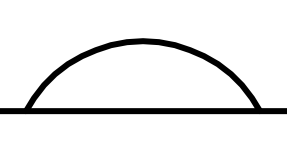
Fillet Welds
What Are Fillet Welds?
A fillet weld is a type of weld that joins two components perpendicularly or at an angle.
T joints are a good example of when fillet welds are used:
Remember that welds can have different cross section contours?
In engineering a fillet is a curved edge and seeing fillet with a convex contour it’s not hard to see where this name probably came about.
Fillet welds are one of the most popular types of welds.
What Is the Symbol for a Fillet Weld?
The symbol for a fillet weld is the shape of a triangle:
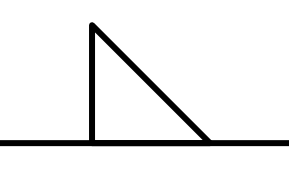
Plug Welds
What Are Plug Welds?
Plug welds are used to attach different components by welding through a hole on one component.
For example we have two plates below, the top plate has a hole through it and the bottom plate has no hole:
A plug weld can be used to fill the hole to join the two components:
What Is the Symbol for a Plug Weld?
The symbol for a plug weld is a rectangle:
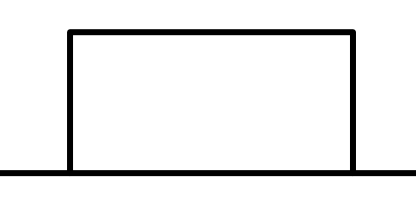
To learn about different types of engineering holes, check out out post here.
Slot Welds
What Are Slot Welds?
A slot weld is similar to a plug weld, but instead of welding through a hole it is a slot instead:
After weld:
What Is the Symbol for a Slot Weld?
The symbol for a slot weld is the same as a plug weld:

Stud Welds
What Are Stud Welds?
A stud in engineering is a bar with a thread. A stud weld is where you weld a stud to another component:
After the stud weld:
Stud welding is usually used to weld large threaded fasteners to thick materials.
What Is the Symbol for a Stud Weld?
The symbol for a stud weld is a circle with a cross through the middle:
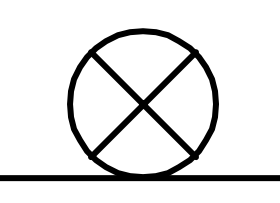
Spot Welds
What Are Spot Welds?
A spot weld is a type of weld that uses electrical resistance rather than filler material.
A spot welder is used to apply electric heat at a localised spot, causing fusion:
Spot welding is commonly used in automotive to join main chassis components.
What Is the Symbol for a Spot Weld?
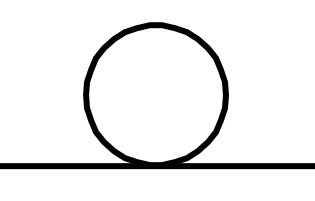
Seam Welds
What Are Seam Welds?
A seam weld is similar to a spot weld, but the electrical resistance is used to create a continuous seam.
After weld:
What Is the Symbol for a Seam Weld?
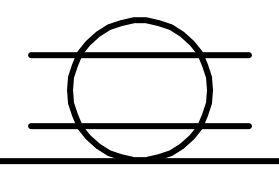
Surfacing Welds
What Are Surfacing Welds?
A surfacing (or overlay) weld is where a bead of weld is applied to the surface of a component:
A surfacing weld can also be applied to improve the characteristics of a component, such as the hardness.
For example, if we want to increase the hardness of a roll like this:
We could apply a weld all over the cylindrical face, using a weld filler that has our desired hardness characteristics:
What Is the Symbol for a Surfacing Weld?
The symbol for a surfacing weld is to semicircles:
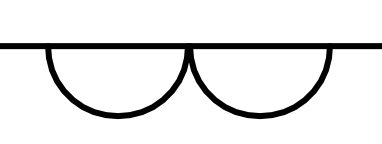
A useful types of welds chart (.PDF) with pictures of the different symbols can be found here.
Conclusion
We hope you enjoyed our types of welds guide.
Now we’d like to hear what you have to say:
Did you learn any new weld types today?
Or which type of weld do you use most often?
Let us know by leaving a comment below right now.

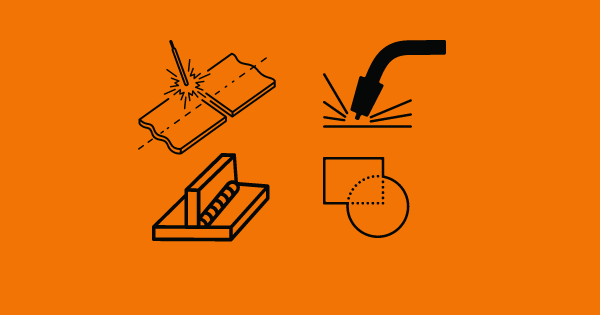
12 thoughts on “Types of Welds – The Complete Guide”
Great
Thanks!
This was very helpful, Cheers.
Great to hear you found it helpful Rachol 😊
Great 👍.
Amazing information, clear and concise!
Thank you!
Thanks Monica! 😊
Well explained with 3D diagrams.
Thanks
Helpful
That’s great to hear Cedric 😊
what a great effort. Thank yuo
Thanks for this Amazing Explanation.
If you can add detailed welding symbols it would be great.
Thank you.